04 Arithmetic
Signed Integer Addition¶
Overflow if result out of range
| Operands | Overflow? |
|---|---|
| +ve \(+\) +ve | ✅ if result sign is 1 |
| +ve \(+\) –ve | ❌ |
| -ve \(+\) -ve | ✅ if result sign is 0 |
Signed Integer Subtraction¶
Take the twos complement (negation) of the subtrahend and add it to the minuend.
Overflow if result out of range
| Operands | Overflow? |
|---|---|
| +ve \(-\) +ve | ❌ |
| +ve \(-\) -ve | ✅ if result sign is 1 |
| -ve \(-\) +ve | ✅ if result sign is 0 |
| -ve \(-\) -ve | ❌ |
Dealing with Overflow¶
Some languages (e.g., C) ignore overflow
- Use MIPS
addu,addui,subuinstructions
Other languages (e.g., Ada, Fortran) require raising an exception
- Use MIPS
add,addi,subinstructions - On overflow, invoke exception handler
- Save PC in exception program counter (EPC) register
- Jump to predefined handler address
mfc0(move from coprocessor 0 reg) instruction can retrieve EPC value, to return after corrective action
Multiplication Hardware¶
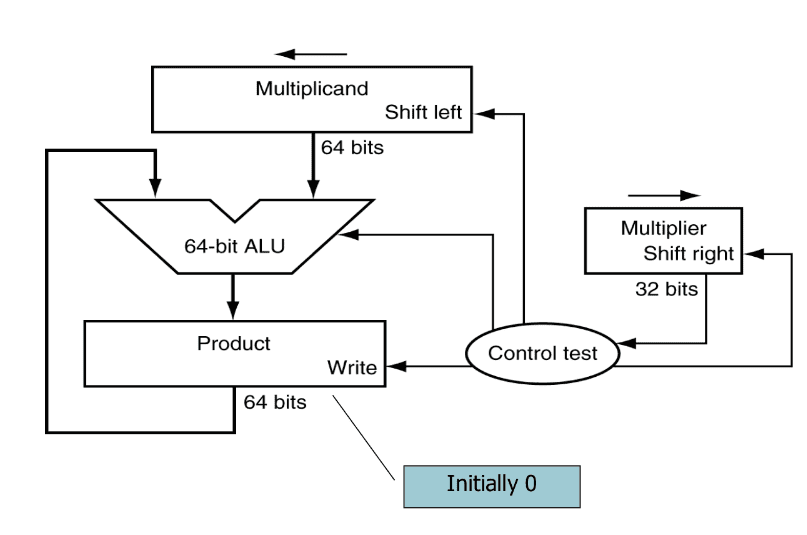
Regular Unsigned Multiplication¶
Length of product is sum of operand lengths
Observations¶
-
Multiplication involves the generation of partial products, one for each digit in the multiplier | Multiplier bit | Partial Product | | -------------- | --------------- | | 0 | 0 | | 1 | Multiplicand |
-
Each successive partial product is shifted one position to the left relative to the preceding partial product (Effectively shifting multiplicand left one position for every bit of multiplier)
-
The final product is produced by summing the partial products.
Possible Improvements¶
Can be done more efficiently
- A running sum of partial products is maintained rather than waiting until the end to sum all partial products
- Saves storage
- Shift multiplier right each step
- Allows to look at a constant position (i.e) examine the least significant bit only
- For each 1 on the LSB of the multiplier
- Add (add running sum of partial product with the multiplicand)
- Shift (shift-left the multiplicand)
- For each 0 on the LSB of multiplier
- Shift left the multiplicand
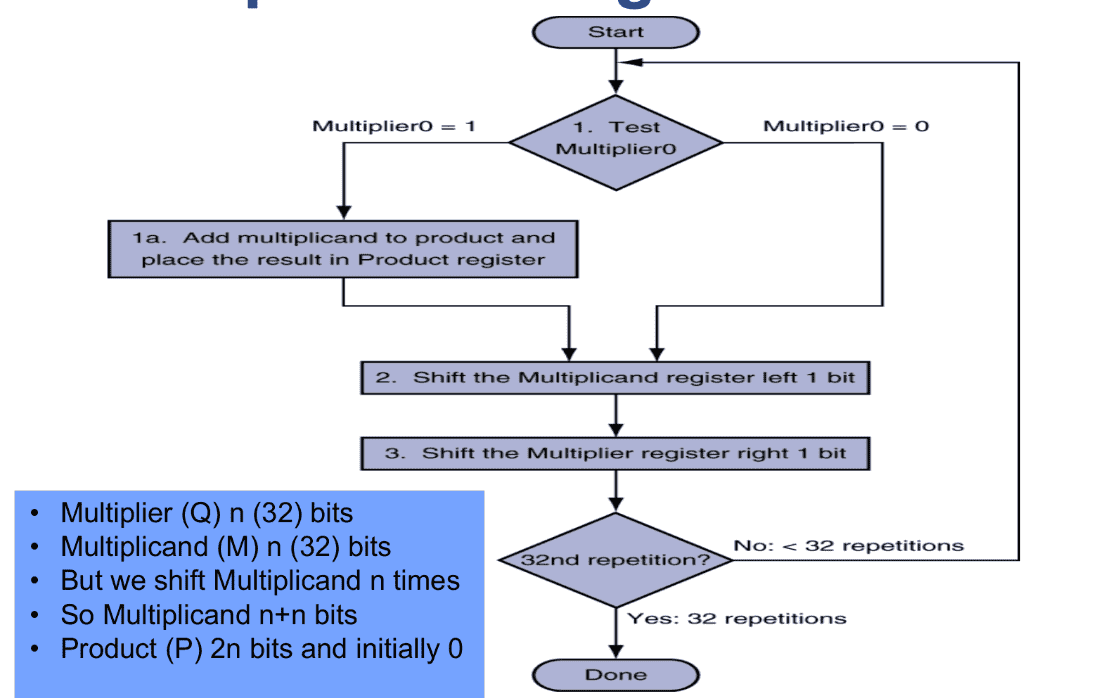
Example¶
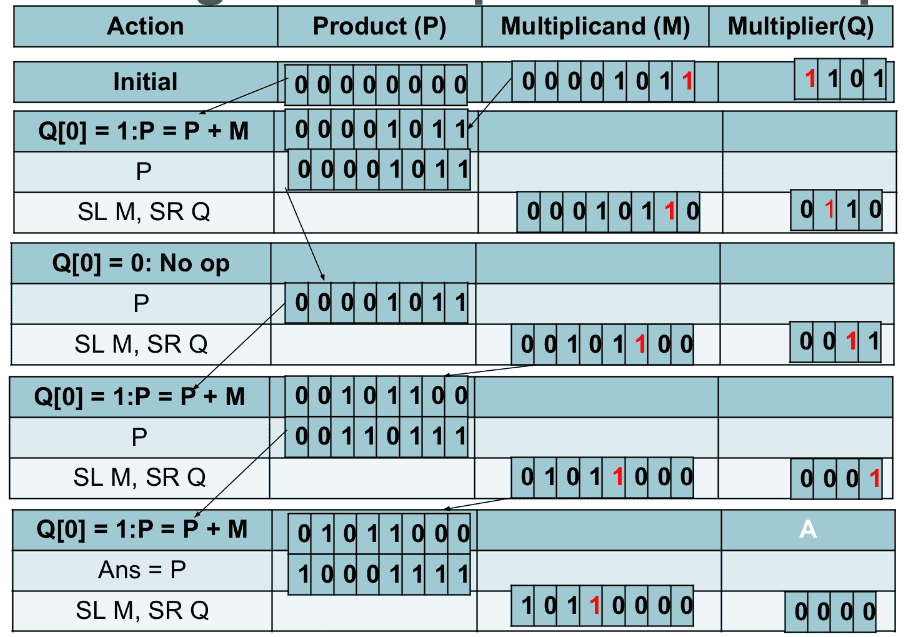
Booth’s Multiplication¶
- Multiplier and multiplicand are placed in the \(Q\) and \(M\) registers
- 1-bit register \(Q_{-1}\) placed logically to the right of the least-significant bit of the \(Q\) register
- The results of the multiplication will appear in the \(A\) and \(Q\) registers
- \(A\) and \(Q_{-1}\) are initialized to \(0\)
Control logic scans the bits of the multiplier Each bit is examined along with the bit to its right
| \(Q_0\) | \(Q_{-1}\) | Action |
|---|---|---|
| 0 | 0 | Shift-Right \(A,Q, Q_{-1}\) |
| 1 | 1 | Shift-Right \(A,Q, Q_{-1}\) |
| 0 | 1 | \(A = A + M\) Shift-Right \(A,Q, Q_{-1}\) |
| 1 | 0 | \(A = A – M\) Shift-Right \(A,Q, Q_{-1}\) |
In order to preserve sign bit arithmetic shift right is performed. The leftmost bit of \(A\), \(A_{n-1}\) is not only shifted into \(A_{n-2}\) but also remains in \(A_{n-1}\)
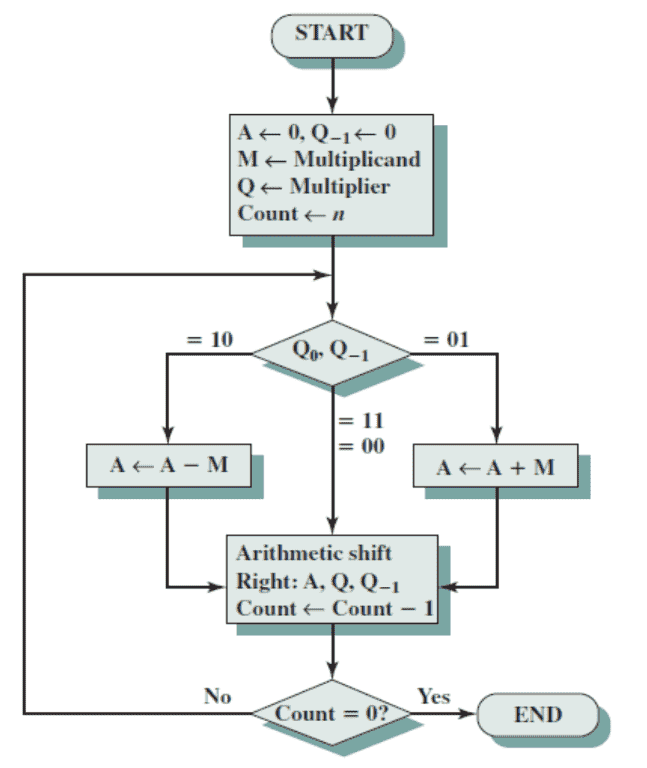
Example¶
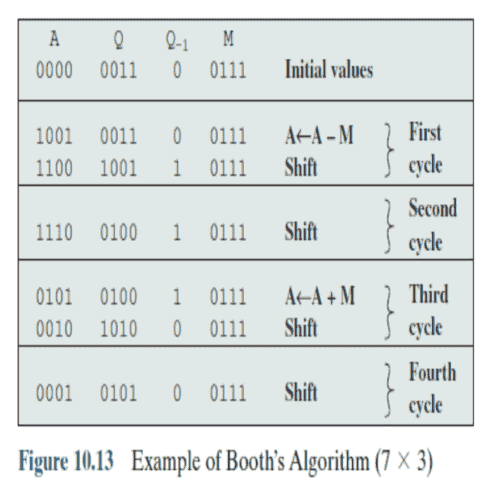
Advantage¶
- Speeds up the multiplication process
- Blocks of 1s or 0s are skipped over, with an average of only one addition/subtraction per block
MIPS Multiplication¶
Two 32-bit registers for product
HI: most-significant 32 bitsLO: least-significant 32-bits
Instructions¶
## 64-bit product in HI/LO
mult rs, rt
multu rs, rt
## Move from HI/LO to rd
mfhi rd
mflo rd
## Least-significant 32 bits of product –> rd
mul rd, rs, rt ## (pseudoinstruction!)